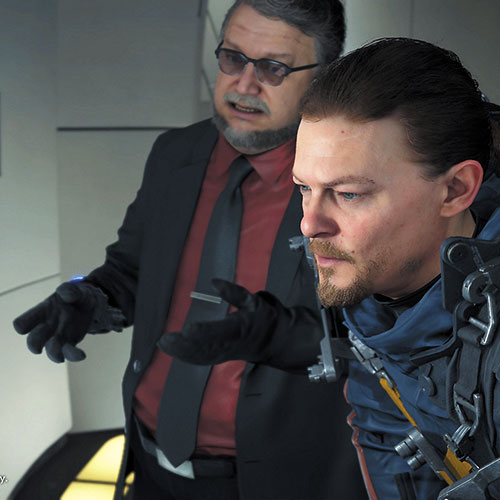Pioneering in a post-apocalyptic world

Game Title: Death Stranding
Platform: PlayStation 4
Genre: Action
Publisher: Sony Interactive Entertainment
Developer: Kojima Productions
Rating: M, for Mature
By Gieson Cacho // The Mercury News (TNS)
Since it was released in 2016, Death Stranding has raised more questions than answers. The project seemed like an amalgamation of random images with gameplay that was equally as mysterious.
If you strip away creator Hideo Kojima’s convoluted and confusing narrative, Death Stranding at its core is a reimagining of Oregon Trail. The concepts behind both titles are the same. Players have to go across the country with logistic constraints of weight and terrain. As protagonist Sam Bridges, played by Norman Reedus, players have to traverse a post-apocalyptic America that has turned into a desolate wilderness.
Phenomena called Death Stranding killed billions as the line between the dead and living disappeared. Invisible monsters called BTs roam the land and people live in bunkers, afraid to travel. Sam accepts a mission to connect communities to the Chiral Network, a super Internet that lets users across the nation share information and fabricate equipment. It’s a way for his organization, Bridges, to rebuild what it calls the United Cities of America.
Players will have to navigate the badlands and figure out how to reach faraway waystations, distribution centers and outposts. Initially that means using ladders to cross streams and ropes to descend safely from cliffsides. They must do this while carrying vital cargo that will keep these communities going. Sam will also have to deal with BTs, which forces him to stealthily venture through dangerous areas, and insane humans called MULEs, who hoard cargo.
Like Oregon Trail, Death Stranding is a game about pioneering. Players blaze trails through lonely landscapes. They have to watch out for a number of dangers and find the optimal path to their destination. What’s notable, though, is that players don’t go it alone. As they travel, they see the tracks of other players that came before them. In addition, gamers can share infrastructure they built and vehicles they fabricated. It’s a way of making the journey easier for each other.
Death Stranding becomes a game about efficiently moving packages like a post-apocalyptic UPS man. Along the way, Sam will gain new abilities and equipment that makes venturing into the unknown easier.
The last part of the Death Stranding journey has Sam trudging through the mountains. This is where roads won’t help players and they’ll have to deal with snowy and harsh conditions. This section forces players to build their own infrastructure through the peaks and ridges. It tests players’ mastery of managing weight, energy consumption and route building. It’s also the most enjoyable part of the campaign, when players feel like pioneers.
Woven through this Oregon Trail-style adventure is a complex narrative and the last quarter of Death Stranding focuses on this. Here is when Kojima tries to tie up the unruly plot threads that emerge throughout the campaign. Players will encounter subterfuge and conspiracy theories and they’ll have to sift for truth through the lies and misdirection. Although much of it is a mess, his team manages to answer nearly all the lingering questions, though the ending will test players’ patience.











